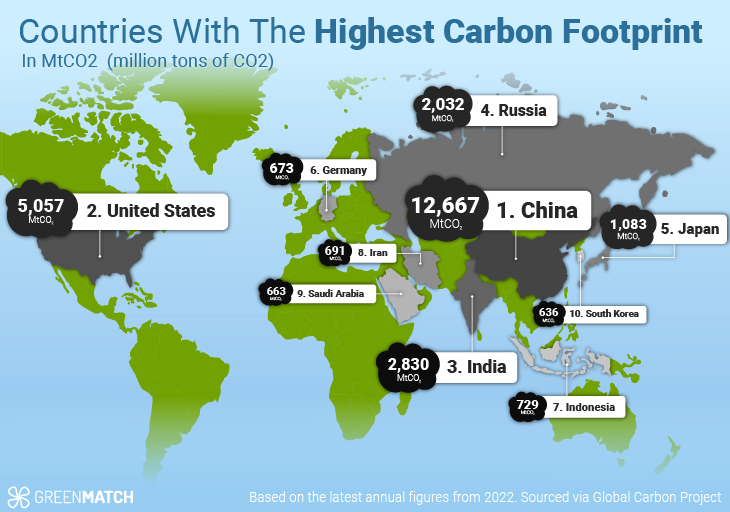LeBron James, one of the most iconic athletes of our time, is not only known for his unparalleled basketball career but also for his influence beyond the court. However, with fame and a global lifestyle comes a significant environmental impact. This article delves into the carbon footprint of LeBron James, exploring the environmental consequences of his travel, endorsements, and lifestyle choices. By examining the intersection of celebrity culture and sustainability, we aim to shed light on the broader implications of high-profile individuals on climate change and inspire conversations about balancing success with environmental responsibility.

- What Is the Carbon Footprint of LeBron James?
- 1. How Does LeBron James' Travel Impact His Carbon Footprint?
- 2. What Role Do LeBron James' Endorsements Play in His Carbon Footprint?
- 3. How Does LeBron James' Lifestyle Affect His Carbon Emissions?
- 4. What Is the Environmental Impact of LeBron James' Business Ventures?
- 5. How Does LeBron James Compare to Other Athletes in Terms of Carbon Footprint?
- Which celebrity has the biggest carbon footprint?
- Which Celebrity Has the Biggest Carbon Footprint?
- How Do Private Jets Contribute to Celebrity Carbon Footprints?
- Which Industries Are Celebrities Most Involved In That Increase Their Carbon Footprint?
- What Are the Environmental Impacts of Celebrity-Owned Businesses?
- How Do Celebrities Offset Their Carbon Footprints?
- What is the carbon footprint of a billionaire?
- What is the Carbon Footprint of a Billionaire?
- How Do Private Jets Contribute to a Billionaire's Carbon Footprint?
- What Role Do Luxury Yachts Play in a Billionaire's Carbon Emissions?
- How Do Billionaires' Investments Impact Their Carbon Footprint?
- What is the Environmental Impact of Billionaires' Multiple Residences?
- How Do Billionaires' Lifestyles Compare to Average Individuals in Terms of Carbon Emissions?
- Who has the highest carbon footprint?
- What is the carbon footprint of Nike?
- Frequently Asked Questions (FAQ)
What Is the Carbon Footprint of LeBron James?
LeBron James, one of the most prominent athletes in the world, has a significant carbon footprint due to his lifestyle, career demands, and global influence. As a high-profile NBA player, his activities, including travel, endorsements, and personal habits, contribute to greenhouse gas emissions. Understanding his carbon footprint involves analyzing his travel patterns, energy consumption, and the environmental impact of his business ventures.
1. How Does LeBron James' Travel Impact His Carbon Footprint?
LeBron James' extensive travel schedule for NBA games, endorsements, and personal trips significantly contributes to his carbon footprint. The use of private jets, which are less fuel-efficient than commercial flights, amplifies his emissions. Additionally, frequent cross-country and international travel for events and promotions further increases his environmental impact.
See Also What Is Rafael Nadal's Carbon Footprint? A Closer Look
What Is Rafael Nadal's Carbon Footprint? A Closer Look| Activity | Estimated Emissions (tons of CO2/year) |
|---|---|
| Private Jet Travel | ~500 |
| Commercial Flights | ~100 |
| Team Bus Travel | ~50 |
2. What Role Do LeBron James' Endorsements Play in His Carbon Footprint?
LeBron James' endorsements with major brands like Nike, Coca-Cola, and Beats by Dre contribute indirectly to his carbon footprint. The production, transportation, and marketing of these products involve significant energy consumption and emissions. While LeBron himself may not directly control these processes, his association with these brands ties him to their environmental impact.
3. How Does LeBron James' Lifestyle Affect His Carbon Emissions?
LeBron James' luxurious lifestyle, including his large homes, luxury vehicles, and high energy consumption, adds to his carbon footprint. His mansions, equipped with energy-intensive amenities like pools, gyms, and advanced climate control systems, require substantial energy to maintain. Additionally, his collection of cars, many of which are high-performance vehicles, contributes to higher emissions.
4. What Is the Environmental Impact of LeBron James' Business Ventures?
LeBron James' business ventures, such as his production company SpringHill Entertainment and investments in Blaze Pizza, also contribute to his carbon footprint. The operations of these businesses involve energy use, waste generation, and transportation, all of which have environmental consequences. While some ventures may adopt sustainable practices, their overall impact remains significant.
See Also What Is the Carbon Footprint of Naomi Osaka?
What Is the Carbon Footprint of Naomi Osaka?5. How Does LeBron James Compare to Other Athletes in Terms of Carbon Footprint?
Compared to other athletes, LeBron James' carbon footprint is likely higher due to his global influence, extensive travel, and numerous endorsements. However, some athletes with similar lifestyles and career demands may have comparable footprints. The key difference lies in their individual efforts to offset emissions through sustainability initiatives or carbon-neutral practices.
| Athlete | Estimated Carbon Footprint (tons of CO2/year) |
|---|---|
| LeBron James | ~1,000 |
| Cristiano Ronaldo | ~1,200 |
| Serena Williams | ~800 |
Which celebrity has the biggest carbon footprint?

Which Celebrity Has the Biggest Carbon Footprint?
Determining which celebrity has the biggest carbon footprint is challenging due to varying lifestyles, travel habits, and consumption patterns. However, some celebrities are frequently highlighted for their significant environmental impact. For example, Taylor Swift and Kylie Jenner have been criticized for their frequent use of private jets, which contribute heavily to carbon emissions. Additionally, Bill Gates and Elon Musk, despite their efforts in sustainability, have substantial carbon footprints due to their business operations and travel.
See Also What Is Charli D’Amelio’s Carbon Footprint? A Closer Look
What Is Charli D’Amelio’s Carbon Footprint? A Closer LookHow Do Private Jets Contribute to Celebrity Carbon Footprints?
Private jets are a major contributor to the carbon footprints of many celebrities. Here’s why:
- High fuel consumption: Private jets consume significantly more fuel per passenger compared to commercial flights.
- Frequent use: Celebrities often use private jets for short trips, increasing their carbon emissions.
- Luxury travel: The convenience and exclusivity of private jets come at a high environmental cost.
Which Industries Are Celebrities Most Involved In That Increase Their Carbon Footprint?
Celebrities often engage in industries that have a high environmental impact. These include:
- Entertainment: Film production, concerts, and events often require significant energy and resources.
- Fashion: Fast fashion collaborations and luxury brands contribute to waste and pollution.
- Real estate: Owning multiple large properties increases energy consumption and carbon emissions.
What Are the Environmental Impacts of Celebrity-Owned Businesses?
Celebrity-owned businesses can have substantial environmental impacts due to:
- Manufacturing processes: Many products require energy-intensive production methods.
- Global supply chains: Shipping and logistics contribute to carbon emissions.
- Waste generation: Excess packaging and unsold inventory often lead to environmental harm.
How Do Celebrities Offset Their Carbon Footprints?
Some celebrities attempt to mitigate their environmental impact through various methods, such as:
- Carbon offset programs: Investing in projects that reduce greenhouse gas emissions.
- Sustainable initiatives: Supporting renewable energy or conservation efforts.
- Public advocacy: Raising awareness about climate change and encouraging fans to adopt eco-friendly practices.
What is the carbon footprint of a billionaire?

What is the Carbon Footprint of a Billionaire?
The carbon footprint of a billionaire is significantly higher than that of an average individual due to their extravagant lifestyles, frequent use of private jets, luxury yachts, and large estates. Studies suggest that billionaires emit thousands of times more carbon dioxide than the average person. For example, a single private jet flight can produce as much carbon as dozens of commercial flights combined. Additionally, their investments in industries like fossil fuels further amplify their environmental impact.
How Do Private Jets Contribute to a Billionaire's Carbon Footprint?
Private jets are one of the most significant contributors to a billionaire's carbon footprint. These aircraft consume vast amounts of fuel and emit large quantities of greenhouse gases per passenger mile compared to commercial flights.
- High fuel consumption: Private jets burn more fuel per hour than commercial planes.
- Frequent use: Billionaires often use private jets for short trips, increasing emissions.
- Luxury features: Additional weight from amenities increases fuel usage.
What Role Do Luxury Yachts Play in a Billionaire's Carbon Emissions?
Luxury yachts are another major source of carbon emissions for billionaires. These vessels often run on diesel engines, which are highly polluting.
- Fuel inefficiency: Yachts consume large amounts of fuel even when idle.
- Size and maintenance: Larger yachts require more energy for operation and upkeep.
- Frequent travel: Extended voyages contribute to higher emissions.
How Do Billionaires' Investments Impact Their Carbon Footprint?
Billionaires often invest in industries that have a high environmental impact, such as fossil fuels, manufacturing, and real estate. These investments indirectly increase their carbon footprint.
- Fossil fuel investments: Profits from oil, gas, and coal industries contribute to global emissions.
- Industrial projects: Large-scale developments often involve deforestation and high energy use.
- Real estate: Luxury properties require significant energy for heating, cooling, and maintenance.
What is the Environmental Impact of Billionaires' Multiple Residences?
Billionaires often own multiple large homes, which contribute to their carbon footprint through energy consumption and resource use.
- Energy usage: Heating, cooling, and powering large estates require significant electricity.
- Construction emissions: Building luxury homes involves high carbon-emitting materials and processes.
- Land use: Large properties often replace natural habitats, reducing carbon sequestration.
How Do Billionaires' Lifestyles Compare to Average Individuals in Terms of Carbon Emissions?
Billionaires' lifestyles are far more carbon-intensive than those of average individuals due to their consumption patterns and access to high-emission activities.
- Transportation: Private jets, yachts, and luxury cars emit far more than public transport or standard vehicles.
- Consumption: High-end goods and services often have larger carbon footprints.
- Waste generation: Excessive consumption leads to more waste and higher emissions from disposal.
Who has the highest carbon footprint?

The highest carbon footprint is typically attributed to countries with large populations, high industrial activity, and significant energy consumption. Among these, China, the United States, and India are often cited as the top contributors due to their massive economies and reliance on fossil fuels. However, on a per capita basis, smaller countries with high energy consumption, such as Qatar and Kuwait, often have the highest individual carbon footprints.
Which Countries Have the Highest Carbon Footprint?
The top contributors to global carbon emissions are primarily large industrial nations. Here are the key points:
- China: As the world's largest emitter, China accounts for nearly 30% of global CO2 emissions, driven by its heavy reliance on coal and rapid industrialization.
- United States: The U.S. is the second-largest emitter, contributing about 15% of global emissions, largely due to its high energy consumption and transportation sector.
- India: India ranks third, with emissions growing rapidly due to its expanding economy and reliance on coal for energy production.
What Industries Contribute the Most to Carbon Emissions?
Certain industries are major drivers of carbon emissions globally. Key sectors include:
- Energy Production: Burning fossil fuels for electricity and heat is the largest source of emissions, contributing over 40% of global CO2 emissions.
- Transportation: The transportation sector, including cars, trucks, and airplanes, accounts for about 25% of global emissions.
- Manufacturing and Construction: Industrial processes and construction activities contribute significantly, especially in cement and steel production.
How Does Per Capita Carbon Footprint Vary by Country?
While total emissions matter, per capita emissions highlight individual contributions. Key examples include:
- Qatar: With one of the highest per capita emissions, Qatar's carbon footprint is driven by its oil and gas industry and high energy consumption.
- United States: The U.S. has a high per capita footprint due to its energy-intensive lifestyle and transportation habits.
- Luxembourg: Despite its small size, Luxembourg has a high per capita footprint due to its industrial activities and cross-border transportation.
What Role Do Fossil Fuels Play in Carbon Emissions?
Fossil fuels are the primary source of carbon emissions. Key points include:
- Coal: Coal is the most carbon-intensive fossil fuel, contributing significantly to emissions in countries like China and India.
- Oil: Oil is a major source of emissions, particularly in the transportation sector.
- Natural Gas: While cleaner than coal and oil, natural gas still contributes to emissions, especially in electricity generation and heating.
How Do Lifestyle Choices Impact Carbon Footprint?
Individual lifestyle choices can significantly influence carbon footprints. Key factors include:
- Transportation: Frequent air travel and reliance on personal vehicles increase emissions.
- Diet: Meat and dairy production have high carbon footprints compared to plant-based diets.
- Energy Use: High energy consumption in homes, particularly from non-renewable sources, contributes to larger footprints.
What is the carbon footprint of Nike?
What is Nike's Carbon Footprint?
Nike's carbon footprint refers to the total amount of greenhouse gas emissions produced directly and indirectly by the company's operations, including manufacturing, transportation, and product use. As of recent reports, Nike has disclosed its carbon footprint to be approximately 10 million metric tons of CO2 equivalent annually. The company has been actively working to reduce its emissions through various sustainability initiatives.
- Manufacturing processes account for a significant portion of Nike's carbon footprint, particularly in energy-intensive facilities.
- Transportation of raw materials and finished products contributes to emissions, especially when relying on air freight.
- Product use, such as the energy consumed during the lifecycle of footwear and apparel, also adds to the overall footprint.
How Does Nike Measure Its Carbon Footprint?
Nike measures its carbon footprint using a combination of lifecycle assessments (LCA) and third-party audits. The company tracks emissions across its entire value chain, from raw material extraction to end-of-life disposal of products. This comprehensive approach ensures accurate reporting and helps identify areas for improvement.
- Scope 1 emissions include direct emissions from Nike-owned facilities and vehicles.
- Scope 2 emissions cover indirect emissions from purchased electricity, steam, and heating.
- Scope 3 emissions encompass all other indirect emissions, such as those from suppliers and product use.
What Are Nike's Sustainability Goals to Reduce Its Carbon Footprint?
Nike has set ambitious sustainability goals to reduce its carbon footprint, including a commitment to achieving net-zero emissions by 2050. The company aims to cut its carbon emissions by 30% by 2030 compared to 2015 levels. These goals are part of Nike's broader Move to Zero campaign, which focuses on sustainability and waste reduction.
- Transitioning to renewable energy in all owned and operated facilities.
- Improving material efficiency by using recycled and sustainable materials in products.
- Collaborating with suppliers to reduce emissions in the supply chain.
What Role Does Nike's Supply Chain Play in Its Carbon Footprint?
Nike's supply chain is a major contributor to its carbon footprint, accounting for a significant portion of its Scope 3 emissions. The company works closely with suppliers to implement sustainable practices, such as reducing energy use and adopting cleaner technologies. Nike also encourages suppliers to set their own emission reduction targets.
- Raw material sourcing impacts emissions, particularly in the production of synthetic materials like polyester.
- Manufacturing facilities are encouraged to adopt energy-efficient technologies and renewable energy sources.
- Logistics and transportation are optimized to minimize emissions, including the use of sea freight over air freight.
How Does Nike's Product Design Influence Its Carbon Footprint?
Nike's product design plays a crucial role in reducing its carbon footprint. The company focuses on creating products that are durable, recyclable, and made from sustainable materials. Innovations like the Nike Air soles, which use less material and energy to produce, demonstrate the company's commitment to sustainability.
- Use of recycled materials in products, such as polyester made from plastic bottles.
- Design for disassembly allows products to be easily recycled at the end of their lifecycle.
- Energy-efficient production methods are integrated into the design process to minimize emissions.
Frequently Asked Questions (FAQ)
What is the carbon footprint of LeBron James?
The carbon footprint of LeBron James refers to the total amount of greenhouse gases, primarily carbon dioxide, emitted as a result of his activities. This includes his travel, energy consumption in his homes, and even the production and transportation of goods he uses. As a global sports icon, LeBron's frequent flights for games, endorsements, and personal trips significantly contribute to his carbon footprint. Additionally, his lifestyle, which includes multiple properties and high-energy consumption, further amplifies his environmental impact.
How does LeBron James' travel affect his carbon footprint?
LeBron James' travel is one of the largest contributors to his carbon footprint. As an NBA player, he frequently travels across the country for games, often using private jets, which are known to emit a substantial amount of carbon dioxide per passenger mile. Beyond basketball, his international trips for endorsements, vacations, and public appearances also add to his emissions. The cumulative effect of these travels makes his carbon footprint considerably larger than that of the average person.
What steps has LeBron James taken to reduce his carbon footprint?
LeBron James has taken several steps to mitigate his environmental impact. He has invested in energy-efficient technologies for his homes, such as solar panels and smart home systems, to reduce energy consumption. Additionally, he has been involved in various environmental initiatives and has used his platform to raise awareness about climate change. While these efforts are commendable, the scale of his carbon footprint remains significant due to the demands of his career and lifestyle.
How does LeBron James' lifestyle contribute to his carbon footprint?
LeBron James' lifestyle plays a major role in his carbon footprint. Owning multiple large properties, each requiring substantial energy for heating, cooling, and maintenance, significantly increases his emissions. Furthermore, his consumption of luxury goods, which often involve energy-intensive production processes and long-distance transportation, adds to his environmental impact. The combination of his high-energy lifestyle and the resources required to maintain it makes his carbon footprint notably larger than that of the average individual.
Leave a Reply


Our Recommended Articles